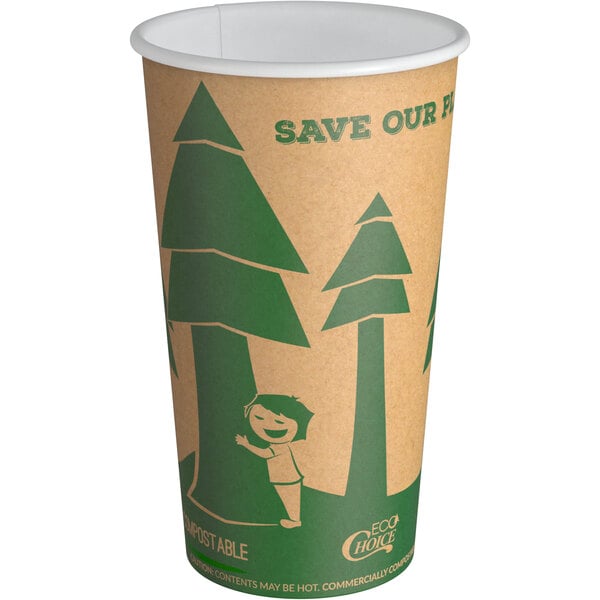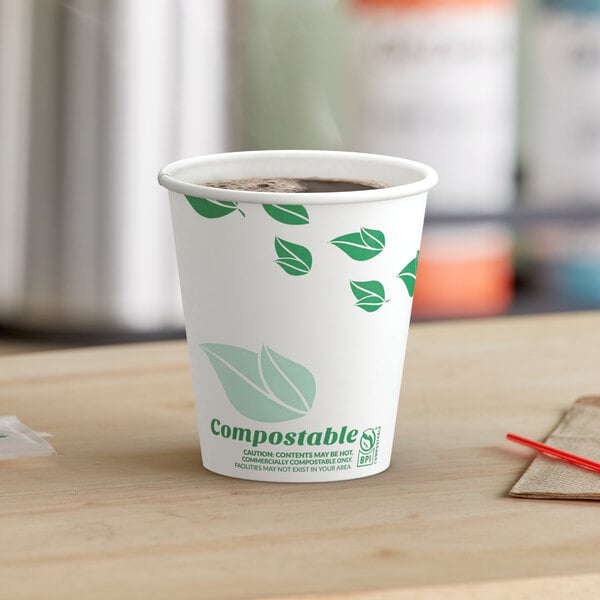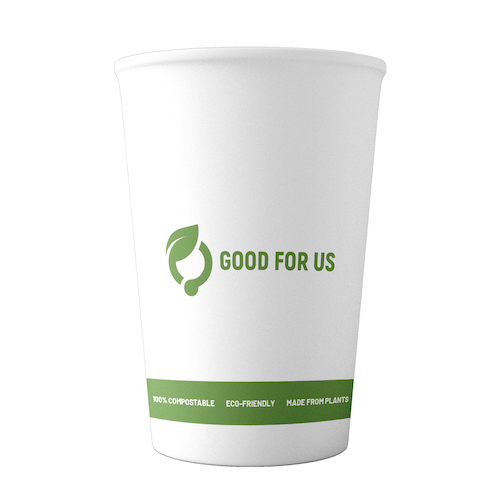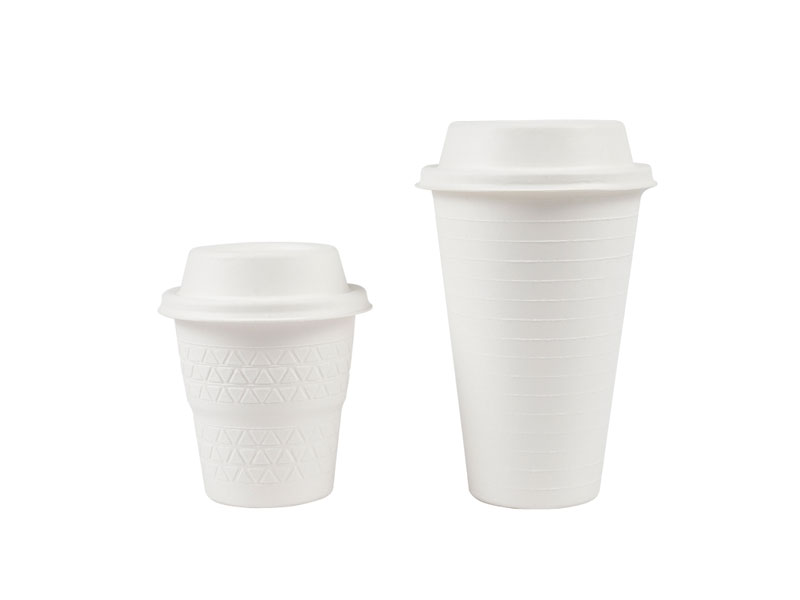Are Biodegradable Paper Cups Eco-Friendly?
The Ultimate Guide to Biodegradable Paper Cups
Understanding Biodegradable Paper Cups
Biodegradable paper cups have gained popularity as a more sustainable alternative to traditional paper or plastic cups. In this section, we will explore what biodegradable paper cups are, how they decompose compared to non-biodegradable options, and the benefits of using them for the environment.
What are biodegradable paper cups and how are they different from traditional paper or plastic cups?
Biodegradable paper cups are cups that are designed to break down naturally and return to the environment without leaving harmful residues. They are typically made from renewable materials such as paper sourced from sustainably managed forests, bamboo, or bagasse (sugarcane fiber).
Unlike traditional paper or plastic cups, biodegradable paper cups are specifically engineered to decompose under certain conditions. They are often coated with a bioplastic lining made from materials like polylactic acid (PLA) or other plant-based resins, which helps enhance their biodegradability.
How do biodegradable paper cups decompose compared to non-biodegradable options?
Biodegradable paper cups decompose through natural processes, such as microbial activity or exposure to moisture and heat. When disposed of in commercial composting facilities, which provide ideal conditions for decomposition, biodegradable paper cups can break down relatively quickly, usually within 90-180 days. However, it’s important to note that decomposition time may vary depending on the specific materials used.
In contrast, non-biodegradable options like plastic cups can persist in the environment for hundreds of years or more, contributing to pollution and waste accumulation. Traditional paper cups, although they can degrade over time, often contain a polyethylene lining that makes them less biodegradable than their biodegradable counterparts.
What are the benefits of using biodegradable paper cups for the environment?
Using biodegradable paper cups offers several benefits for the environment:
- Reduces waste: Biodegradable paper cups have a lower environmental impact compared to single-use plastic cups. As they decompose, they minimize the amount of waste that ends up in landfills or as litter.
- Renewable resources: Many biodegradable paper cups are made from renewable resources like sustainably sourced paper, bamboo, or bagasse. By using these materials, we decrease our reliance on fossil fuels and nonrenewable resources.
- Carbon footprint reduction: Biodegradable paper cups made from sustainable materials can help reduce greenhouse gas emissions. The production of traditional plastic cups, on the other hand, relies heavily on fossil fuels and contributes to climate change.
- Compostable: Biodegradable paper cups can be composted in commercial composting facilities, providing valuable organic matter for soil enrichment. Composting helps divert waste from landfills and supports sustainable agriculture practices.
- Consumer demand: As more individuals and businesses become aware of the environmental impact of single-use plastics, there is a growing demand for sustainable alternatives. Choosing biodegradable paper cups demonstrates a commitment to eco-friendly practices and can attract environmentally conscious customers.
In conclusion, biodegradable paper cups offer a more sustainable alternative to traditional paper or plastic cups. With their ability to decompose and minimize waste, they contribute to a cleaner environment and support a circular economy. By choosing biodegradable paper cups, we can make a positive impact on the planet, one cup at a time.
Continue reading with Section 2: Materials and Certifications
Materials and Certifications
Biodegradable paper cups are an eco-friendly alternative to traditional paper or plastic cups. They are specifically designed to have a minimal impact on the environment, both during their production and after their use. In this section, we will explore the materials commonly used in biodegradable paper cups, as well as the certifications consumers should look for to ensure their biodegradability. We will also discuss where consumers can find biodegradable paper cups, both locally and online.
What materials are biodegradable paper cups typically made from?
Biodegradable paper cups are made from a variety of materials that are chosen for their sustainability and ability to decompose naturally. Here are some of the commonly used materials:
- PLA (Polylactic acid): PLA is a bioplastic derived from renewable resources such as corn starch or sugarcane. It is a popular choice for lining the inside of paper cups as it provides a barrier against liquids and is compostable.
- Plant-based fibers: Some biodegradable paper cups are made entirely from plant-based fibers, such as sugarcane fiber or bamboo. These materials are renewable and compostable, making them excellent options for eco-conscious consumers.
- Recycled paper: Using recycled paper is another sustainable option for biodegradable paper cups. By repurposing post-consumer waste, these cups help reduce the demand for virgin paper and minimize the environmental impact of the manufacturing process.
- Water-based coatings: For added durability and leak resistance, biodegradable paper cups may be coated with water-based coatings. These coatings are free from harmful chemicals and can be composted along with the rest of the cup.
By utilizing these materials, biodegradable paper cups are able to minimize their impact on the environment while still providing a reliable and convenient beverage container.
What certifications should consumers look for to ensure the biodegradability of paper cups?
To ensure that the biodegradable paper cups are truly environmentally friendly and will properly decompose, consumers should look for the following certifications:
- BPI (Biodegradable Products Institute) certification: BPI certification guarantees that the paper cups are compostable in commercial composting facilities. This certification ensures that the cups meet specific standards for biodegradability and compostability.
- FSC (Forest Stewardship Council) certification: FSC certification ensures that the paper used in the cups comes from responsibly managed forests. This certification promotes sustainable forestry practices and supports the conservation of biodiversity.
- ASTM D6400 certification: This certification indicates that the cups meet the standards set by ASTM International for compostability. Cups with this certification are designed to break down into compost within a specific timeframe and under specific conditions.
- EN 13432 certification: EN 13432 certification is a European standard that guarantees the biodegradability and compostability of packaging materials, including paper cups.
By looking for these certifications, consumers can have confidence in the biodegradability and sustainability of the paper cups they choose.
Where can consumers find biodegradable paper cups locally or online?
Finding biodegradable paper cups has become increasingly easier as more businesses and retailers embrace eco-friendly alternatives. Here are some places where consumers can find biodegradable paper cups:
- Local grocery stores and supermarkets: Many local grocery stores and supermarkets now carry a range of eco-friendly products, including biodegradable paper cups. Look for sections dedicated to sustainable or eco-friendly products.
- Specialty stores: Specialty stores that focus on eco-friendly or sustainable products are likely to offer biodegradable paper cups. These stores may also carry accessories such as cup lids and sleeves made from sustainable materials.
- Online retailers: Online retailers offer a wide variety of biodegradable paper cups, including different sizes and designs. Websites like Amazon, Eco-Products, and Green Pack have a vast selection of biodegradable cups to choose from.
- Food service suppliers: Many food service suppliers cater to businesses and organizations in the hospitality and food industry. These suppliers often carry biodegradable paper cups in bulk quantities, making them a great option for businesses or events.
By exploring these options, consumers can easily find biodegradable paper cups that suit their needs and preferences. It’s important to remember that availability may vary depending on location, so it’s best to check with local retailers or suppliers for specific product availability.
In conclusion, biodegradable paper cups are made from sustainable materials such as PLA, plant-based fibers, and recycled paper. Consumers should look for certifications like BPI, FSC, ASTM D6400, and EN 13432 to ensure the cups’ biodegradability. These cups can be found in local grocery stores, specialty stores, online retailers, and food service suppliers. Choosing biodegradable paper cups is not only a responsible choice for the environment but also a convenient and practical option for everyday use.
Proper Disposal and Composting Tips
Biodegradable paper cups are a fantastic eco-friendly alternative to traditional disposable cups made from plastic or non-biodegradable materials. The proper disposal and composting of these cups are essential to maximize their environmental benefits. In this section, we will explore the best practices for disposing of biodegradable paper cups and provide tips for composting them at home. Additionally, we will discuss how using biodegradable paper cups can contribute to reducing the environmental impact at events and parties.
How should biodegradable paper cups be disposed of to maximize their environmental benefits?
To ensure the maximum environmental benefits of biodegradable paper cups, it is important to dispose of them correctly. Here are some guidelines for proper disposal:
- Separate the cup from any plastic or non-compostable components. Many biodegradable paper cups come with compostable lids or sleeves. Remove these parts and dispose of them separately according to their compostability.
- Check the cup for any leftover liquid or food waste. Empty and rinse the cup if necessary. It is crucial to remove any contaminants before composting the cup.
- Place the clean paper cup in a compost bin or a designated composting facility. If you don’t have access to a compost bin or facility, check with your local waste management services to see if they accept biodegradable paper cups in their composting programs.
- If composting is not an option, dispose of the paper cup in a recycling bin designated for paper products. Although biodegradable cups can be recycled, the recycling process may not be as environmentally friendly as composting.
- Avoid throwing biodegradable paper cups in the regular trash, as they will most likely end up in a landfill where they won’t degrade properly.
Remember, composting biodegradable paper cups is the ideal method of disposal, as it allows them to break down naturally, releasing valuable nutrients back into the soil.
Are there specific tips for composting biodegradable paper cups at home?
Composting biodegradable paper cups at home is not only environmentally friendly but also a great way to enrich your garden soil. Here are some tips for composting biodegradable paper cups at home:
- Ensure proper airflow: Place the biodegradable paper cups in your compost bin or pile in a way that allows airflow. Avoid compacting the cups too tightly, as this can slow down the composting process.
- Mix with other compostable materials: Add other compostable materials such as yard waste (leaves, grass clippings), fruit and vegetable scraps, and coffee grounds. This mixture of carbon-rich (biodegradable paper cups) and nitrogen-rich (food waste) materials will create a balanced compost pile.
- Shred or tear the cups: To speed up the decomposition process, consider shredding or tearing the biodegradable paper cups into smaller pieces. This increases the surface area, allowing microorganisms to break them down more efficiently.
- Monitor moisture levels: Keep an eye on the moisture levels in your compost pile. Biodegradable paper cups require moisture to decompose properly. If the pile becomes too dry, add water to maintain a moist but not waterlogged environment.
- Turn the compost pile: Regularly turning your compost pile helps aerate it and ensures more even decomposition. This will help break down biodegradable paper cups faster.
Remember to be patient with the composting process. It may take several months for the biodegradable paper cups to completely decompose, depending on the environmental conditions and the composition of your compost pile.
How can using biodegradable paper cups contribute to reducing environmental impact at events and parties?
Events and parties often generate a significant amount of waste, especially when it comes to disposable cups. By using biodegradable paper cups, you can significantly reduce the environmental impact. Here’s how:
- Minimize plastic waste: Biodegradable paper cups eliminate the need for plastic cups, which take hundreds of years to break down in landfills. By choosing biodegradable options, you are diverting plastic waste from the environment.
- Reduce carbon footprint: Biodegradable paper cups are often made from renewable and sustainable materials such as sugarcane fiber or corn PLA. These materials require less energy to produce compared to traditional plastic cups derived from fossil fuels. By opting for biodegradable options, you are reducing your carbon footprint.
- Support composting initiatives: Using biodegradable paper cups encourages composting. When these cups are composted, they break down into organic matter that enriches the soil, reducing the need for chemical fertilizers. By supporting composting initiatives, you are contributing to a more sustainable and nutrient-rich ecosystem.
- Educate and inspire others: When using biodegradable paper cups at events and parties, you have the opportunity to educate and inspire others to make more sustainable choices. By leading by example, you can encourage others to choose eco-friendly alternatives and raise awareness about the environmental impact of disposable cups.
In conclusion, proper disposal and composting of biodegradable paper cups are crucial for maximizing their environmental benefits. By following the recommended guidelines for disposal, composting, and using them at events, you can significantly reduce your carbon footprint, support composting initiatives, and inspire others to make more sustainable choices. So, let’s raise our biodegradable paper cups and toast to a greener future!
Comparison between Biodegradable and Non-Biodegradable Cups
| Biodegradable Paper Cups | Non-Biodegradable Cups | |
|---|---|---|
| Decomposition Time | 90-180 days | Hundreds of years |
| Environmental Impact | Lower | Higher |
| Material | Renewable and sustainable | Fossil fuel-based |
| Disposal Options | Composting | Landfill or recycling |
Benefits of Using Biodegradable Paper Cups
| Benefits | Description |
|---|---|
| Waste Reduction | Minimizes waste in landfills and as litter |
| Renewable Resources | Made from sustainable materials |
| Carbon Footprint Reduction | Lower greenhouse gas emissions compared to plastic cups |
| Compostability | Can be composted, enriching the soil |
| Consumer Demand | Aligns with the increasing demand for eco-friendly options |
FAQs about biodegradable paper cups:
What are biodegradable paper cups and how are they different from traditional paper or plastic cups?
In the context of understanding biodegradable paper cups, they are cups designed to decompose naturally and return to the environment without leaving harmful residues.
How do biodegradable paper cups decompose compared to non-biodegradable options?
In terms of decomposition, biodegradable paper cups break down through natural processes like microbial activity or exposure to moisture and heat, usually within 90-180 days when disposed of in commercial composting facilities.
What are the benefits of using biodegradable paper cups for the environment?
Using biodegradable paper cups reduces waste, promotes renewable resources, lowers the carbon footprint, allows composting, and meets increasing consumer demand for eco-friendly alternatives.
What materials are biodegradable paper cups typically made from?
Biodegradable paper cups are commonly made from PLA, plant-based fibers, recycled paper, and water-based coatings to minimize their impact on the environment.
What certifications should consumers look for to ensure the biodegradability of paper cups?
Consumers should look for certifications like BPI, FSC, ASTM D6400, and EN 13432 to guarantee the compostability and environmental sustainability of biodegradable paper cups.
In conclusion, biodegradable paper cups are eco-friendly alternatives that benefit the environment. Made of sustainable materials, these cups decompose efficiently, reducing waste. Look for certifications to ensure their biodegradability. Proper disposal and composting maximize their environmental impact. Use these cups at events to make a positive difference.





